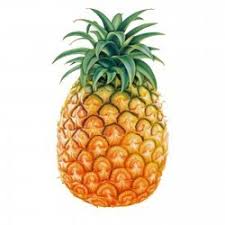Pineapple
While the pineapple is not native to Hawaii, the delightful fruit has become synonymous with the culture and cuisine of the island chain. Known as “halakahiki” in Hawaiian, the fruit is considered a symbol of welcome and friendship. The pineapple is a tropical plant, indigenous to Souoth America where it soon spread to the West Indies and was eventually introduced in 1493 to European explorers, such as Christopher Columbus, who brought it back to Europe.
An Introduction to the History of Pineapple
How Did the Pineapple :
throughout much of civilization after its arrival in Europe where it was cherished as a symbol of royalty. It’s not known exactly when the pineapple was first grown on the Hawaii islands, but historians believe it was likely around the year 1770. An English horticulturist named Captain John Kidwell, first began commercial canned production of the pineapple in 1892. The canning production closed in 1898 because of high tariffs placed on imported fruits which made it difficult to make a profit.
Around the early 1900’s James Drummond Dole began his own business venture with the goal of distributing canned pineapple to grocery stores around the country. Dole purchased fertile fields in Oahu to cultivate his crop. Thanks to the industrial revolution, he soon purchased a machine which automated the process of skinning, coring, and slicing the fruit. Dole’s entrepreneurial spirit led to Hawaii becoming the largest pineapple cannery in the world by the 1930’s. In the 21st century, canning production has primarily moved to Asia, but fresh pineapple is still exported.
From the outside, a pineapple may not look very appetizing, with its tough, thick skin and its spiny leaves. However, once you get past its exterior, it’s one of the sweetest and juiciest treats. Below, Dole/Tropical Honolulu's leading grower of Tropical Gold Pineapples®, reveals several fun facts about



Comments
Post a Comment